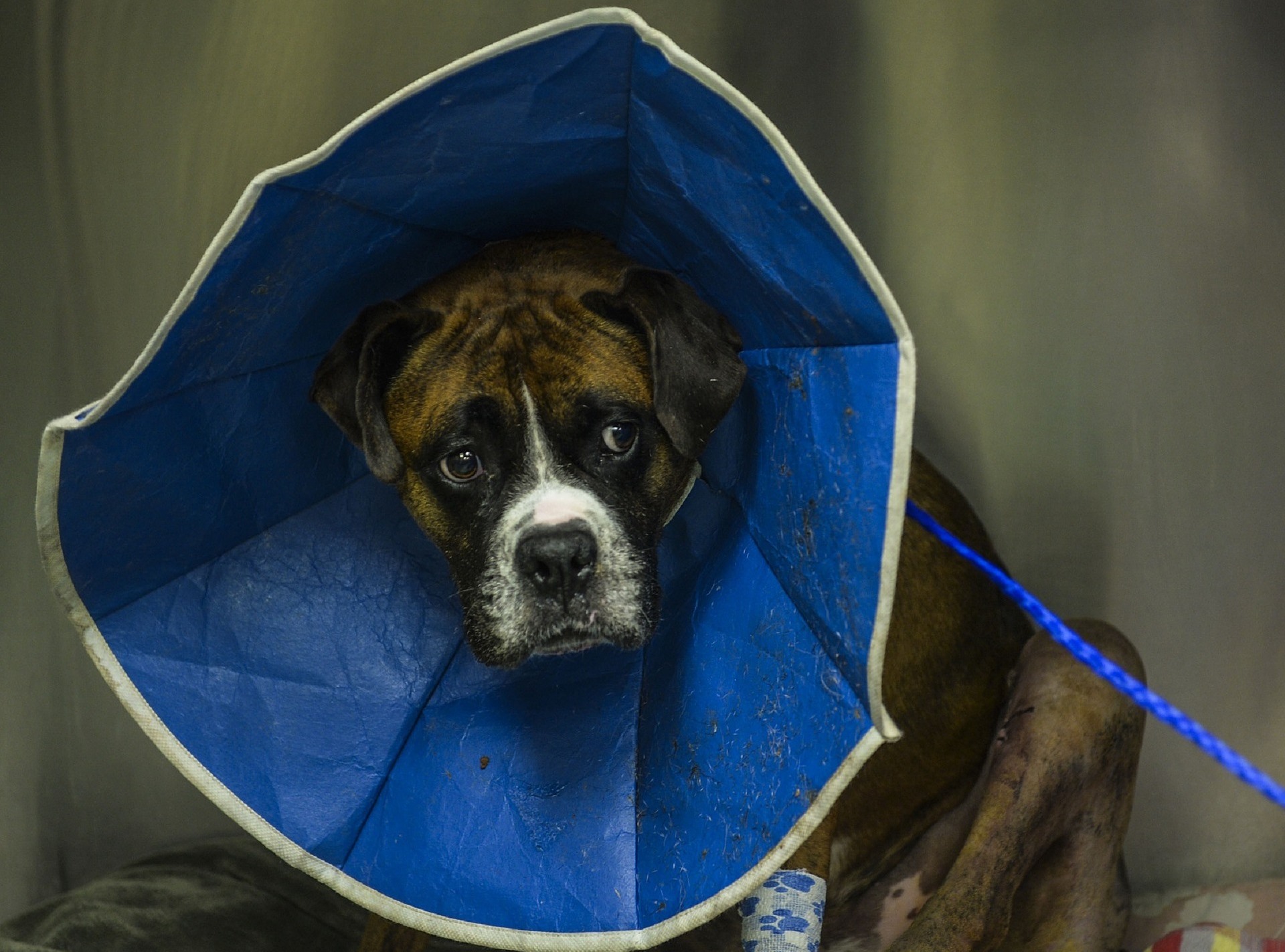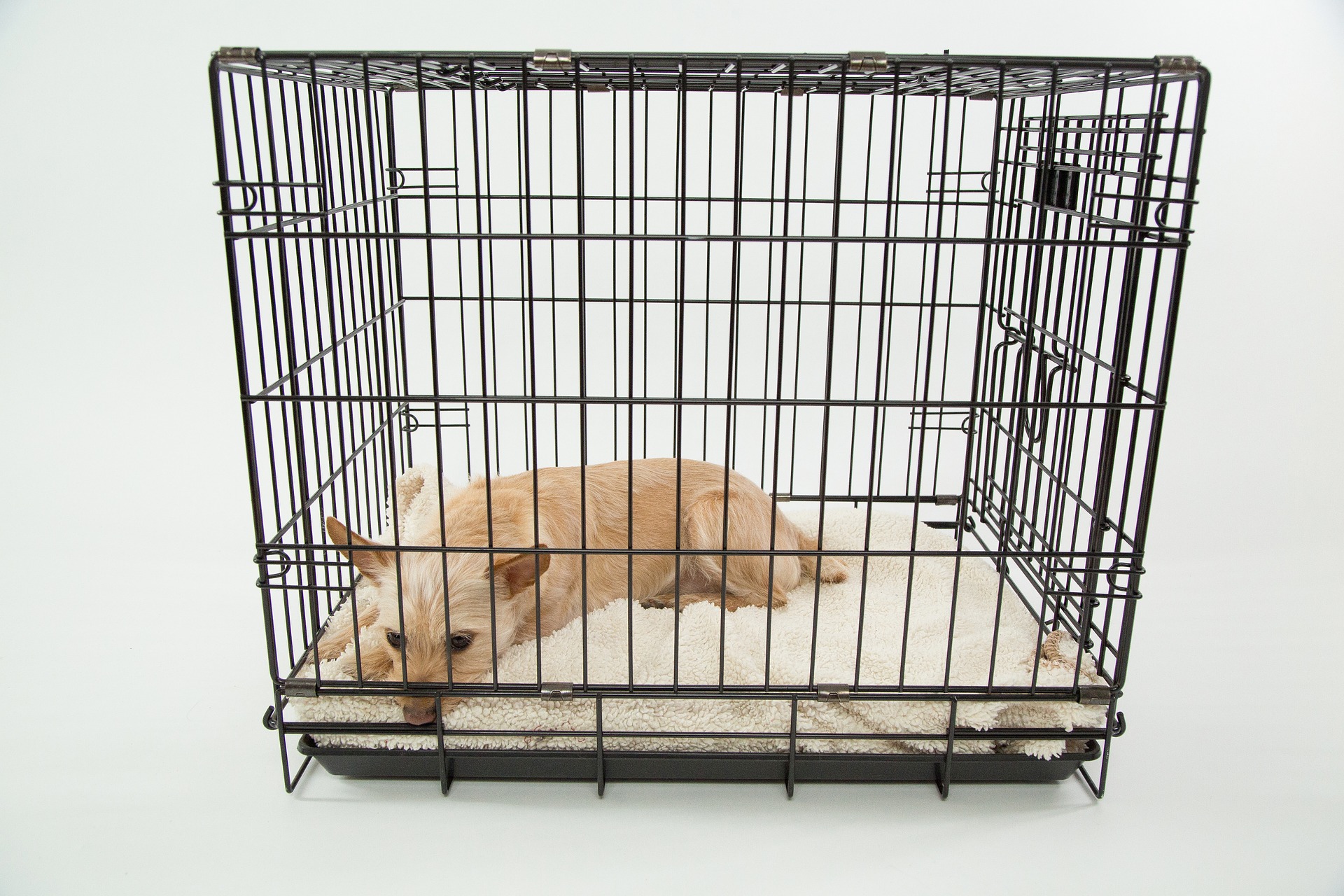Dr. Phil Zeltzman’s Blog
Why is my dog crying after surgery?
“Doctor, I don’t know what to do, my dog keeps crying ever since coming home from surgery.”

This is a concern we occasionally hear after surgery. So why do dogs cry (or vocalize) after surgery? Note: we do not mention cats below, because, well, cats are different, so only part of what follows applies to cats.
1. Dysphoria
Dys what?
Dysphoria.
Dogs who wake up from surgery are discombobulated. They have no idea what happened to them. They’re spacey or groggy or loopy while the anesthesia medications wear off. They may not know who you are and where they are.
If you’ve ever had anesthesia, you likely felt the same way. You may also have seen videos of kids or adults waking up from anesthesia, after dentistry or surgery, and they say the weirdest or funniest things – which they don’t even remember later.
Since dogs don’t understand what’s happening, it causes anxiety. And they don’t know how to express that, except through whining.
While it’s stressful to any pet lover, the good news is that it should go away after a good night sleep.
If you doubt it, let me give you a classic example.
If we only sedate a dog (not even full anesthesia) to take X-rays or change a bandage or trim their nails, and reverse the drugs, they may experience dysphoria. We haven’t done anything painful, yet they cry like they’re in severe pain.
Why is that?
Well, it’s exactly for the reasons explained above. It’s dysphoria. They’ll get over it.
Bottom line: This type of crying should stop when you sit next to your dog, or you call his or her name.
2. Pain
Pain can definitely cause crying. Now, if your vet or your surgeon takes pain seriously, and provided appropriate pain control, the crying is most likely not due to pain.
As I always say, “pain is unacceptable in 2020.” We have enough pain medications available. We routinely dispense 2 or 3 pain medications to make sure your dog is comfortable after surgery.
If you are convinced that your dog is in pain, please call your vet and get an additional pain medication. That’s an easy solution.
Bottom line: This type of crying does not stop when you sit next to your dog, or you call his or her name.
3. Attention-seeking
Some dogs, like some babies (or older kids!) are quick at learning that if they whine, it makes you stop what you’re doing and you pay more attention to them. You pet them. You use your funny voice. You give them a treat.
It’s a learned behavior, which you encourage by “giving in.”
Bottom line: This type of crying should stop when you sit next to your dog, or you call his or her name.

There are other reasons for which your dog might cry after surgery. It can mean anything from “I hate this stupid cone around my head” to “I hate being locked up in a room/in a crate” or “Why do I have a 10 pound bandage on my leg?” or “I am bored to tears in here!” or “Why don’t you understand that I need to pee?”
So these are “benign” reasons that make them anxious. Again, they don’t know how to express their frustration besides crying. Other reasons include not feeling well, being unsteady, feeling nauseous, feeling cold.
Some breeds are more sensitive than others. And some individuals are more sensitive than others (“every patient is different”).
So depending on the situation:
. You may bring water or food closer. Some dogs need help when they wear a cone (which you should not take off). Handfeeding may help.
. You may want to give your dog a (safe) chew toy to prevent boredom.
. You can use white noise to drown out the normal sounds of the household.
. You can’t do anything about a bandage, although if it’s too tight, it can cause pain, so you should seek medical attention.
. You should absolutely follow your vet’s or your surgeon’s instruction to keep the cone on 24/7, or to keep your dog confined 24/7.
. If your dog needs to eliminate, then obviously you should allow that. Remember, you’ve trained your dog to be potty trained, so they may absolutely refuse to go on the floor or in their crate.
But be careful, as some smart dogs can learn that “whining = I can escape from jail and go outside” and they may take advantage of that.
Bottom line: This type of crying should stop when you sit next to your dog, or you call his or her name… or your take them outside to eliminate.
These are the main reasons for which a dog may cry. If you’re still not sure what’s going on with your dog, please call your vet clinic and brainstorm with a nurse to try to figure out why it’s happening.
The good news is that if you follow the rules, the whining should stop overnight or within a few days. If it doesn’t, then I’ll give you 2 more options:
. The reason for the crying is not listed above, and you need to figure out what the cause is by talking to your veterinary team.
. All we need is a mild sedative or tranquilizer to “take the edge off” and help your dog relax and accept their new fate: the plastic cone, confinement, a bandage etc.
After all, waking up from anesthesia is not fun for humans, so there is no reason to believe that it’s any more fun for a patient who has no idea what just happened.
Again: this is normal and it will get better with time, so hang in there!
Phil Zeltzman, DVM, DACVS, CVJ, Fear Free Certified

Dr. Phil Zeltzman is a traveling veterinary surgeon in Pennsylvania & New Jersey. An award-winning author, he loves to share his adventures in practice along with information about vet medicine and surgery that can really help your pets. Dr. Zeltzman specializes in orthopedic, neurologic, cancer, and soft tissue surgeries for dogs, cats, and small exotics. By working with local family vets, he offers the best surgical care, safest anesthesia, and utmost pain management to all his patients. Sign up to get an email when he updates his blog, and follow him on Facebook, too!

